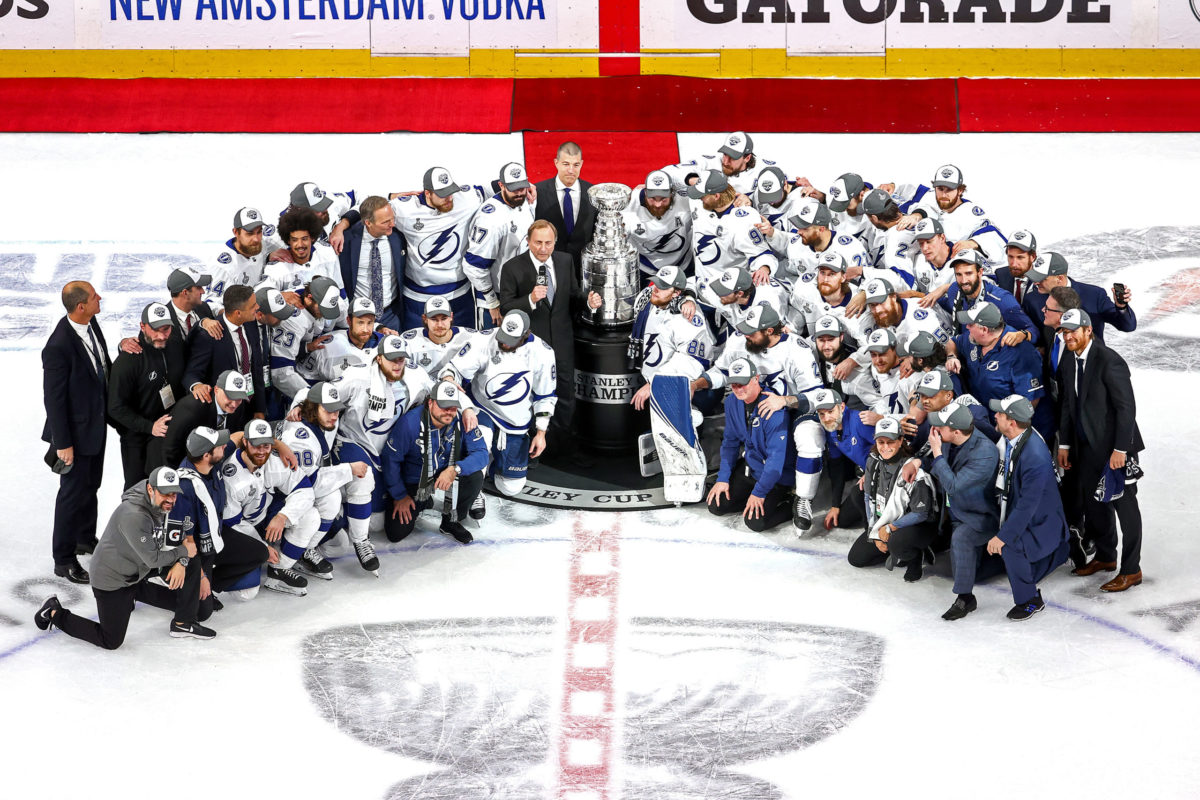There’s an old adage in baseball: Every game you win in April is one you don’t have to win in September. The point being, a fast start makes for an easy finish. Logically, this is true in all sports, including hockey. Every win on the ice in October is a game you don’t have to win in March.
With all eyes on the Colorado Avalanche to finally get over their second round playoff curse and make a push to win their first Stanley Cup in 20 years, let’s examine how Stanley Cup winning teams, including the two Avalanche Cup-winning teams, started and ended their seasons.
In analyzing records from the last 25 Stanley Cup winners, beginning with the 1996 Avalanche and through the 2021 Tampa Bay Lightning (there was no hockey season in 2005 due to a labor dispute between the players and owners), two things are clear: It helps to win your division, and it does indeed help to get off to a fast start.
Stanley Cup Champions Have Strong Starts to Their Seasons
Since 1996, only two Stanley Cup-winning teams had a losing record in their first 10 games; both of those were in the last four years. The 2019 St. Louis Blues opened their season 3-4-3, while the 2018 Washington Capitals opened their season 4-5-1. Prior to that, you have to go back to 1995 when the New Jersey Devils opened their campaign 3-4-3. That season was only 48 games long (due to another labor dispute), making New Jersey’s poor start that much more challenging. Their Cup win, the first in franchise history, was never in doubt as they swept the Detroit Red Wings 4-0 in the Stanley Cup Final.

While teams entering the playoffs with a lackluster record can still achieve success, it doesn’t happen that often. Twenty of the 25 Stanley Cup winning teams since 1996 finished first or second in their division, with 12 of the 20 finishing first. Four of those teams also won the Presidents’ Trophy, the league’s award for the best regular-season record. The other five teams—all in the last decade—finished third in their divisions, and only one of them, the 2011-12 LA Kings, was seeded eighth (last) in their conference. In other words, teams that build a foundation of regular-season success are positioned to exploit that success in the postseason.
And how did the two Stanley Cup-winning Avalanche teams fare early in their seasons? The 1996 team opened its campaign 6-3-1, while the 2001 team started its season 8-0-2, which is tied with the 2013 Chicago Blackhawks for the best start to a season for a team that went on to win the Cup. Both Avalanche teams also finished first in their division, though neither won the Presidents’ Trophy.
Late Season Success Not as Important as Early Season Success
If it’s important to win games early in the season, it stands to reason it should be equally important to win games late. Teams can enter the playoffs hot and use that momentum to carry them far. (Just look at the Montreal Canadiens last season) But that heat has limits.
Going by the numbers, a strong finish is not as important as a strong start. Stanley Cup champion teams won an average of 6.4 of their first 10 games, but only 5.5 of their last 10. This number is likely skewed by teams that have locked up their division title and are resting star players to prepare for the postseason. Nine of the 25 teams had losing streaks of two or more games to end the season. The coldest team to enter the playoffs since 1996 was the 2001-02 Red Wings, who won only one of their last 10 games, and lost or tied their final seven contests.

The bottom line for Avalanche fans is that they should be rooting for their team to get out of the gate quickly. With coach Jared Bednar and superstar center Nathan MacKinnon out for COVID protocols, the team will get an early test. All but one of their October opponents, the Blackhawks, were playoff teams last year, and two of them, the Vegas Golden Knights and the Lightning, will likely be an especially hard out. Should the Avalanche exit October with a losing record, history suggests they will have a steep hill to climb.